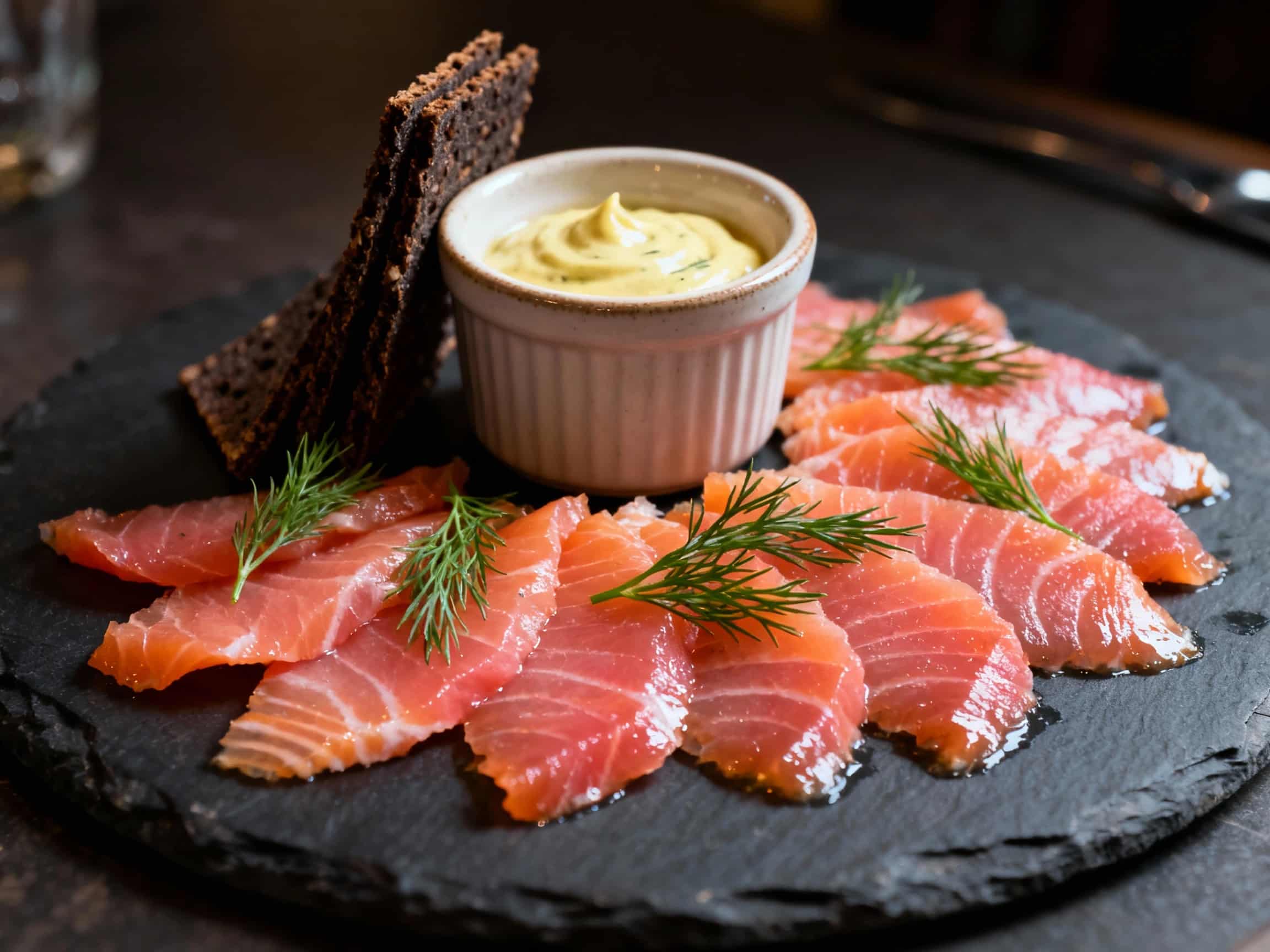
Gravlax
Gravad lax
- Country
- Sweden
- Region
- Scania
- Recipes
- 2 Recipes
Dish information
Gravlax, meaning 'grave salmon', is a Nordic delicacy with ancient roots, originating from Scandinavia, most notably Sweden. The preservation technique involves curing raw salmon, traditionally in the ground (hence 'grav'), mixing it with a blend dominated by dill, salt, and sugar. This method allows the salt and sugar to draw out moisture and firm the fish, while the dill infuses its aromatic essence. The practice likely dates back to the Middle Ages when methods for preserving fish were crucial for survival, particularly during long winters. The modern iteration often omits the 'grave' part, with the salmon being cured in a press or simply weighted down. The dish is typically served thinly sliced, exhibiting a beautiful pink hue and a firm yet yielding texture. Its flavor profile is a delicate balance of savory, sweet, and herbaceous notes from the dill, with a subtle brininess from the salt. It is almost always accompanied by a 'hovmästarsås' or 'mustard-dill sauce', a creamy dressing that complements the cured salmon perfectly. Gravlax is a celebratory dish, often found on smörgåsbord spreads, festive buffets, and as an elegant appetizer, showcasing the region's rich fishing heritage and its mastery of curing techniques. Its introduction and popularity have spread internationally, appreciated for its refined taste and sophisticated simplicity.
Timeline
The practice of curing fish, including salmon, likely became widespread in Scandinavia for preservation.
The term 'Gravlax' first appears in Swedish literature, describing the traditional curing method.
Gravlax evolved into a more refined appetizer, often served with a mustard-dill sauce, gaining wider culinary recognition.

